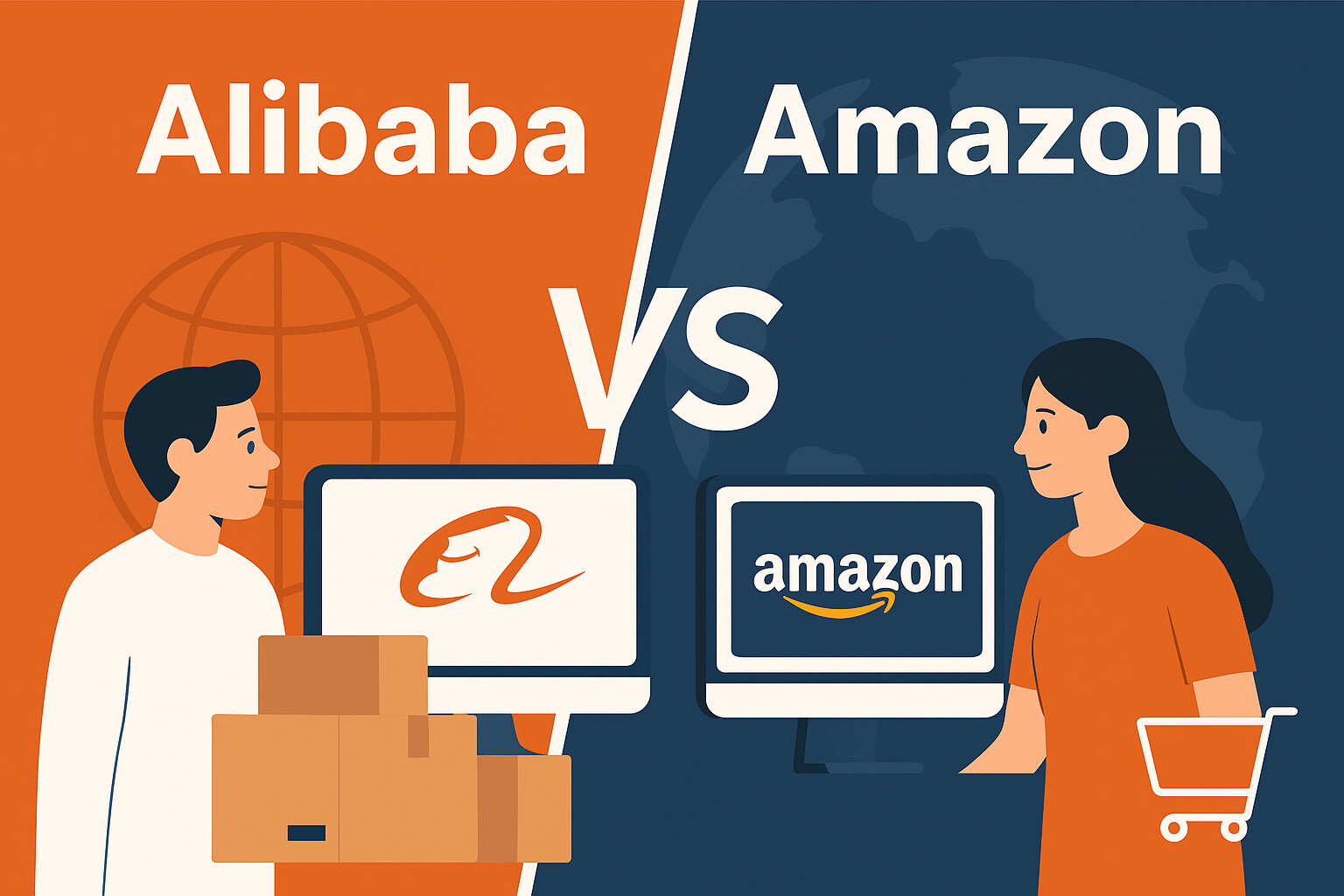E-Commerce Trends (Part 1) – these developments shape your e-com strategies

Every year, new trends emerge in e-commerce. Whether it concerns the adjustment of inventory management due to supply shortages, the handling of AI, or the shift from omnichannel to multichannel – the e-commerce landscape is shaped by numerous developments that influence online retailers and set new impulses. With the upcoming year-end, it is time to take a look at the upcoming trends. Which developments should online retailers keep an eye on? First, we will focus on the most important changes in fundamental e-commerce strategies.
E-Commerce: The Status Quo
The statistics speak a clear language regarding developments in e-commerce: Between 2013 and 2018, the German Retail Association shows a growth of around 66 percent in B2C e-commerce. And in 2021, online retail already surpassed the 100 billion euro mark in Germany, according to data from IFH KÖLN. By 2025, IFH KÖLN estimates that one in five euros in retail will be generated online. The institute forecasts a revenue of 139 billion euros for Germany in 2025. The global forecasts for e-commerce are even more impressive: A survey by Statista estimates the potential revenue in 2025 at 2.9 trillion euros – an increase of around 80 percent compared to 2021.
However, revenue growth is only one facet of developments in e-commerce. The question of the most important platforms in online retail is also crucial for success. Here, the significance of Amazon quickly becomes apparent. In the ranking of the 100 largest online shops in Germany, Amazon ranks first among the most important shopping platforms, according to data from the EHI Retail Institute. As a generalist, Amazon.de generated a net revenue of 15.86 billion euros in 2021. Looking at the most popular product categories in e-commerce also reveals clear trends in shopping preferences. The highest-grossing product categories can be attributed to the clothing segment (19.3 billion euros in revenue in 2021) as well as electronics and telecommunications (16.44 billion euros in revenue in 2021). The clothing segment alone accounts for almost a quarter of the total revenue in B2C e-commerce.
The status quo, however, provides online retailers with only a partial picture of developments. They should not only focus on revenue forecasts, key shopping platforms, and popular product categories. For successful companies today, it is also important to provide an excellent customer experience for their customers.
E-Commerce Strategies – the future focuses on customer experience
We have compiled three e-commerce strategies for the upcoming year that contribute to customer experience. Thus, omnichannel and D2C will play a significant role for online retailers in the coming year. The right payment mix is increasingly becoming a success criterion, and last but not least, the future of e-commerce will be shaped by mobile devices.
1. The shift towards multi- and omnichannel is increasing, D2C is gaining momentum
Customers today are rarely exclusively browsing the retailers’ online shop when searching for a product. Instead, they gather information about offers on various shopping platforms – primarily on online marketplaces like Amazon, but also OTTO or Kaufland. Retailers can choose between two strategies for marketplaces: multichannel commerce or omnichannel commerce.
The difference between the two lies in the integration of the sales channels. In multichannel commerce, products are offered on different marketplaces and in the retailer’s own online shop, but there is no integration of the various channels. In omnichannel commerce, it is different. Here, all channels interact with each other. Additionally, retailers often integrate brick-and-mortar stores alongside online commerce if they operate physical stores.
All of this is no longer new for many retailers. Nevertheless, the shift towards multi- and even more towards omnichannel commerce is one of the most important e-commerce trends of recent years. Why? Because customer expectations are rising. They expect integrated sales channels and, moreover, a variety of potential sales locations in both online and brick-and-mortar retail. Therefore, for the upcoming year, retailers should continue to expand their sales channels.
In addition, there is the topic of D2C commerce, as Timo Weltner, founder and CEO of NETFORMIC, emphasizes: “The elimination of the ‘classic’ retailer is gaining new momentum. The topic of D2C, not in the sense of new brands, but in the sense that even the ‘traditional’ manufacturers are increasingly approaching the customer directly, is becoming more and more significant, and as a trading organization, I have to increasingly question my own value creation. Basically, the only options left are to go to a service provider, to a marketplace, or to a private label, or even a mixed model, but a classic trading model will no longer exist in a few years.” Instead of selling products to customers through intermediaries, the focus here is on the direct contact between manufacturer and customers. And this also poses new challenges for the online presence.
“The elimination of the ‘classic’ retailer is gaining new momentum. The topic of D2C, not in the sense of new brands, but in the sense that even the ‘traditional’ manufacturers are increasingly approaching the customer directly, is becoming more and more significant, and as a trading organization, I have to increasingly question my own value creation. Basically, the only options left are to go to a service provider, to a marketplace, or to a private label, or even a mixed model, but a classic trading model will no longer exist in a few years.”
Timo Weltner, founder and CEO of NETFORMIC
2. Service through flexible payment
The way customers can pay in the online shop has a significant impact on the conversion rate. Various studies, such as the ECC Payment Study Vol. 25, have confirmed this multiple times. In the ECC Payment Study Vol. 25, around one third of consumers stated that they would abandon their purchase in the online shop if the top 3 payment methods – invoice purchase, PayPal, and direct debit – are not offered.
It is important to note: The preferred payment methods are strongly dependent on the target group. If retailers want to optimize the offering for their online shop, they should therefore integrate not only the general top methods but also the payment options popular among their target group. This trend towards a wide range of payment options is not new, but it remains one of the most relevant.
3. Mobile First – Desktop comes in second place
The e-commerce trend towards mobile shopping is unbroken and will continue to gain importance. Already in 2021, 57 percent of online purchases were made via smartphone; an additional 29 percent via tablet. This share is likely to have increased further in 2022. The largest target group for mobile commerce is Generation Z. They have grown up with smartphones and prefer to make their purchases using them. In the age group between 16 and 29 years, which includes part of Generation Z, the smartphone usage for online shopping is at 80 percent. Furthermore, Generation Y also represents an important target group in mobile commerce. Among those aged 30 to 49, which also includes Generation Y, smartphone usage is similarly high at 77 percent as in Generation Z.
What does this mean for retailers now? First and foremost: to optimize the online shop for mobile devices, if this has not yet been done. The trend towards mobile commerce is increasing – and not only due to generational factors but also in general. Companies in e-commerce that do not want to lose conversions due to a lack of user experience in mobile commerce should also evaluate new services and needs of their target groups in mobile online shopping and continuously adapt their shop accordingly.
4. Social Commerce
Every year, the topic of social commerce is gaining importance. Especially TikTok and Instagram are popular platforms for online retailers to reach potential customers. The advantage is that a large budget is not necessarily required for reach on social media. In the past, the criticism was justified that a good social media channel significantly improves brand image but does not generate direct sales, as social media seemed too untrustworthy for many people to actually disclose their bank details there.
Looking at today’s e-commerce trends, it is clear that this argument no longer holds. In fact, half of all social media users (47%) now shop on these platforms, and 42% are willing to share their credit card details there or at least use this information on these platforms.
5. Augmented Reality (AR)
Augmented Reality – that is, embedding virtual products into the real world using a smartphone or PC camera – offers online retailers various opportunities to make their products more “tangible” for potential customers.
There are already some pioneers in this area who have successfully implemented the concept. A prominent example is IKEA, whose app has allowed customers to use AR for years to, for example, view the new sofa in their own living room.
Another example is Watchbox. The watch retailer uses AR to give customers the opportunity to virtually try on different sizes of watches. This way, they can select the perfect watch and ensure that it looks good on their own wrist.
In the field of online retail, AR is particularly popular in the fashion industry, as customers can virtually try on their clothing and check the fit and appearance of an item before purchasing. Fashion retailer Asos, for example, uses simulated models on the website that users can dress with AR. This allows customers to see how clothing looks on different body types.
6. Videos
When looking more closely at the e-commerce trends of recent years, it becomes clear that the use of product videos by retailers has significantly increased. Whether on their own online shop, on platforms like Amazon, or as video ads on social media – the presentation of products in moving images has become a crucial sales factor. This is mainly because products are sold more often when customers have the opportunity to see them in action. Buyers gain a better understanding of how a product works and its benefits through these videos, which ultimately leads to increased willingness to purchase. In today’s digital landscape, integrating high-quality product videos has therefore become an essential strategy for retailers to stand out from the competition and enhance the customer experience.
Conclusion: E-commerce strategies must ensure flexibility
When looking at current e-commerce trends in the area of strategies, flexibility is more important than ever in the coming year. This applies both to sales channels and to payment methods. Customers want to choose the platform through which they shop. Whether it is an online shop, an online marketplace, via a company app, or, in the case of hybrid retailers, also the physical store.
Customers also expect a wide range of payment options that are continually adapted to current needs and technological possibilities. Last but not least, the principle of mobile first applies to e-commerce strategies and payment in online retail. If retailers consider these three aspects in their strategies, they are already well-prepared for the future.
Social commerce, augmented reality (AR), and the use of videos also play a crucial role. Social commerce is on the rise on platforms like TikTok and Instagram, as retailers can reach potential customers without having to invest a large budget. In the past, social media was considered too insecure for direct purchases, but today many users are already shopping directly through these channels.
AR opens up opportunities for online retailers today to make their products experiential. AR is particularly popular in the fashion industry, as customers can virtually try on clothing to check the fit and appearance.
In addition, the importance of product videos has significantly increased. Retailers are increasingly relying on moving images to give customers the opportunity to see products in action. This improves understanding of the goods and increases willingness to purchase.
Overall, all of these e-commerce trends are essential for retailers to remain competitive and optimize the customer experience.
Image credit: © Dilok – stock.adobe.com









